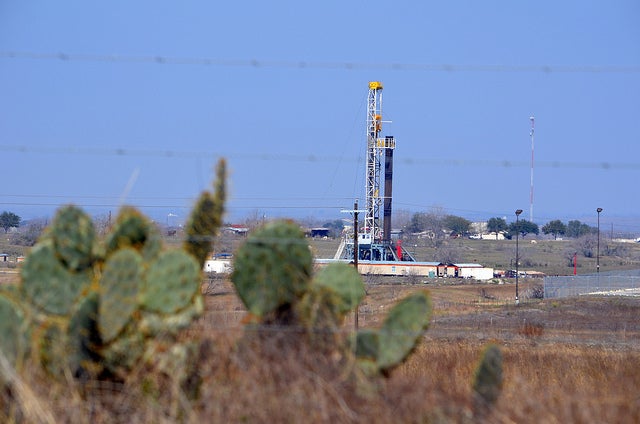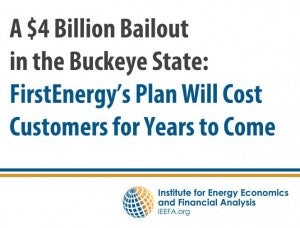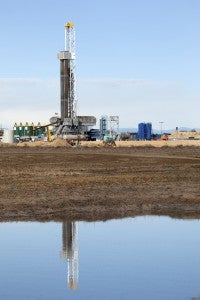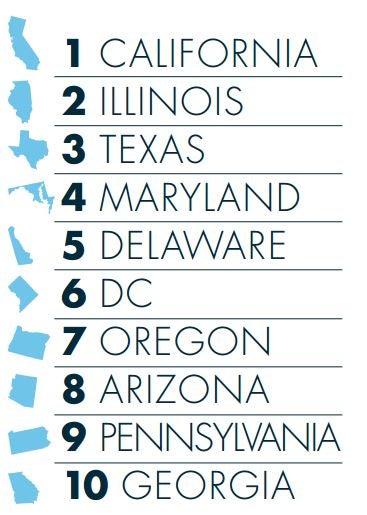 The west is rightly known for mountain views and desert vistas. Many of these landscapes are managed by the U.S. Department of Interior’s Bureau of Land Management (BLM) on behalf of all Americans. But something else is a major part of the region as well – tens of thousands of oil and gas wells and their associated infrastructure.
The west is rightly known for mountain views and desert vistas. Many of these landscapes are managed by the U.S. Department of Interior’s Bureau of Land Management (BLM) on behalf of all Americans. But something else is a major part of the region as well – tens of thousands of oil and gas wells and their associated infrastructure.
More than 90 percent of oil and gas production on BLM lands comes from the Western U.S. The tax and royalty revenue generated by this production is used to fund local infrastructure needs –schools, roads and other improvements — in rural and tribal communities. But due to outdated policies (they have not been significantly revised in 30 years), too much of our natural gas has been going to waste. That means these communities, and American taxpayers in general, are losing out.
In fact, in 2013, oil and gas companies threw away $330 million worth of the public’s gas according to a recent report – shortchanging the communities that rely on the revenue from these resources most. Read More










 California’s “big three” utilities, at the behest of state regulators, are in the process of examining and improving how they price electricity, including something called
California’s “big three” utilities, at the behest of state regulators, are in the process of examining and improving how they price electricity, including something called  FirstEnergy’s plea to keep four aging power plants alive will cost Ohio customers almost $4 billion, according to a new study out today by the Institute for Energy Economics and Financial Analysis (IEEFA). The proposal is currently in front of the Public Utilities Commission of Ohio (PUCO).
FirstEnergy’s plea to keep four aging power plants alive will cost Ohio customers almost $4 billion, according to a new study out today by the Institute for Energy Economics and Financial Analysis (IEEFA). The proposal is currently in front of the Public Utilities Commission of Ohio (PUCO). Ohio utilities FirstEnergy and AEP, as readers of this blog know too well, want the Buckeye State to bail out their uneconomic power plants. Combined, their proposals before the Public Utilities Commission of Ohio (PUCO) would run Ohioans nearly $6 billion in increased costs. We understand where the companies’ greedy desire for subsidies comes from, but the arguments for them have become downright silly.
Ohio utilities FirstEnergy and AEP, as readers of this blog know too well, want the Buckeye State to bail out their uneconomic power plants. Combined, their proposals before the Public Utilities Commission of Ohio (PUCO) would run Ohioans nearly $6 billion in increased costs. We understand where the companies’ greedy desire for subsidies comes from, but the arguments for them have become downright silly. Questions about if and how hydraulic fracturing activities (or “fracking” to some) can contaminate drinking water have been top-of-mind for many since the practice started getting widespread public attention about a decade ago. Recognizing the validity of those concerns, EPA undertook a study to see how the full ‘hydraulic fracturing water cycle’ – which includes water withdrawals, chemical use and mixing, well injection, waste water management and disposal — could potentially impact our drinking water resources. In a
Questions about if and how hydraulic fracturing activities (or “fracking” to some) can contaminate drinking water have been top-of-mind for many since the practice started getting widespread public attention about a decade ago. Recognizing the validity of those concerns, EPA undertook a study to see how the full ‘hydraulic fracturing water cycle’ – which includes water withdrawals, chemical use and mixing, well injection, waste water management and disposal — could potentially impact our drinking water resources. In a  The GridWise Alliance, a leading business forum for the development of a smart, clean, modern electric grid, just released its
The GridWise Alliance, a leading business forum for the development of a smart, clean, modern electric grid, just released its